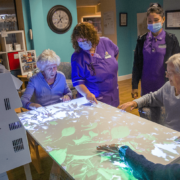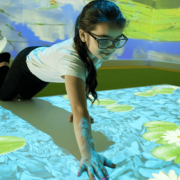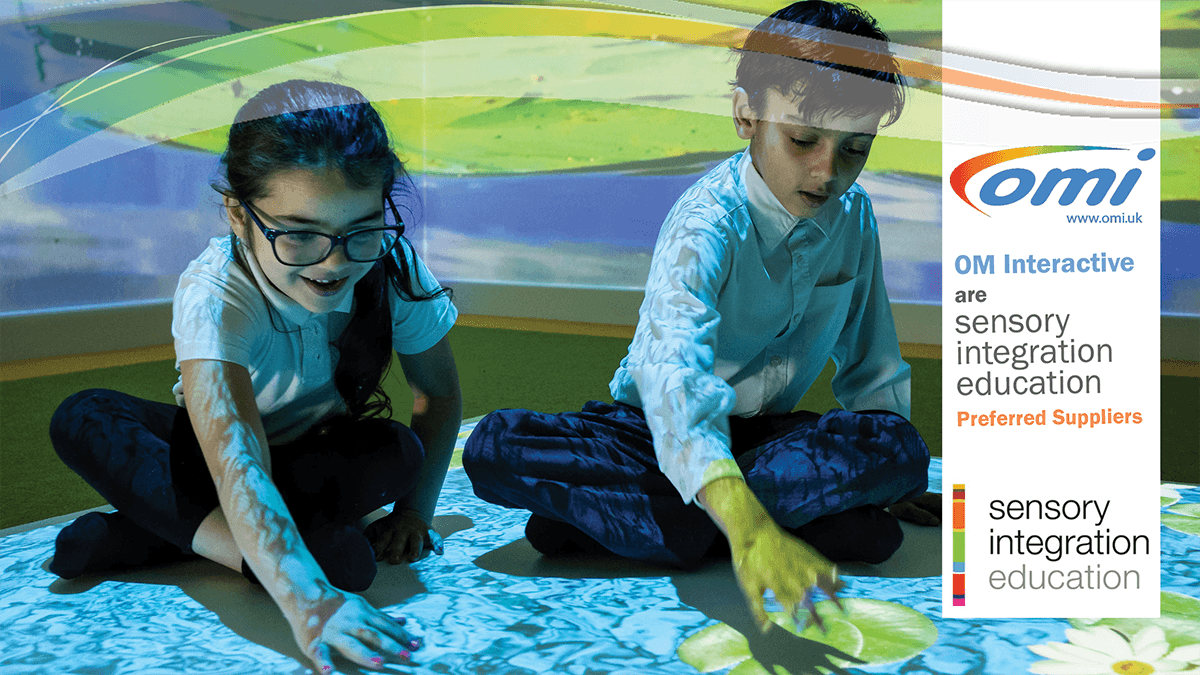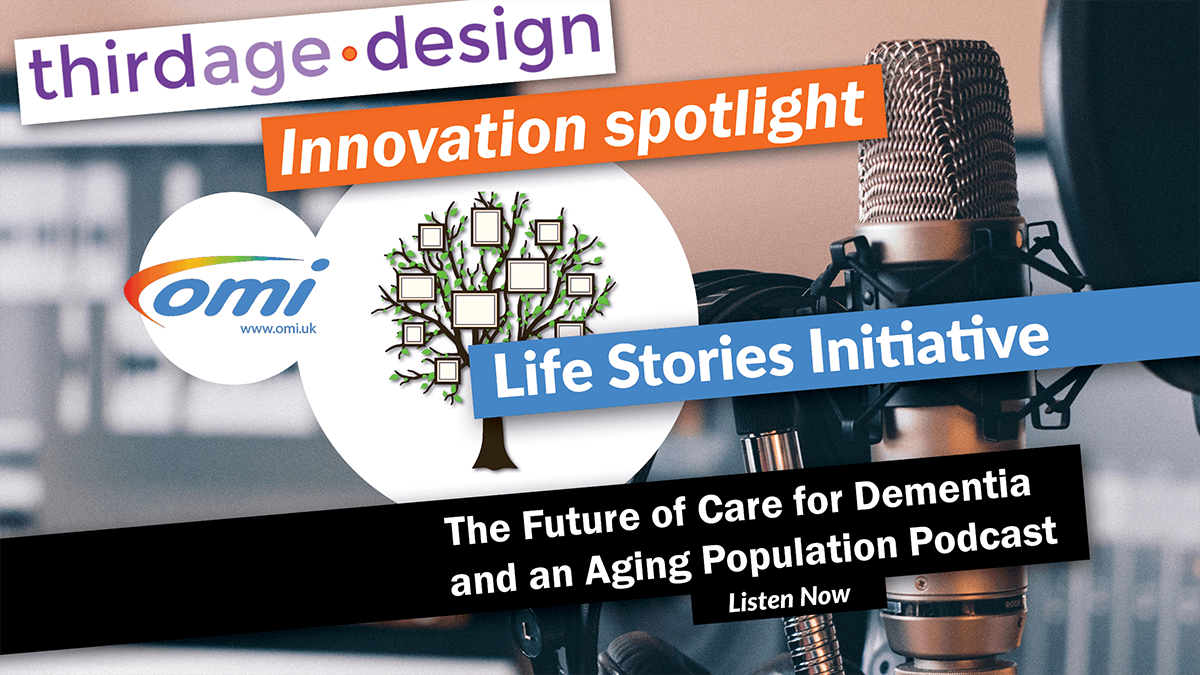Comparing Multi-touch Tables and Interactive Projectors
Why Choose omiVista?
It can be a daunting task deciding which type of system to choose for the provision of interactive sensory activities in a care environment, whether it be for dementia care. or care for those with learning disabilities in a special needs school, hospital or centre.
We will look at some of the differences between the two types of system a multitouch screen, or a “magic table” interactive sensory projector such as a Tovertafel or omiVista.
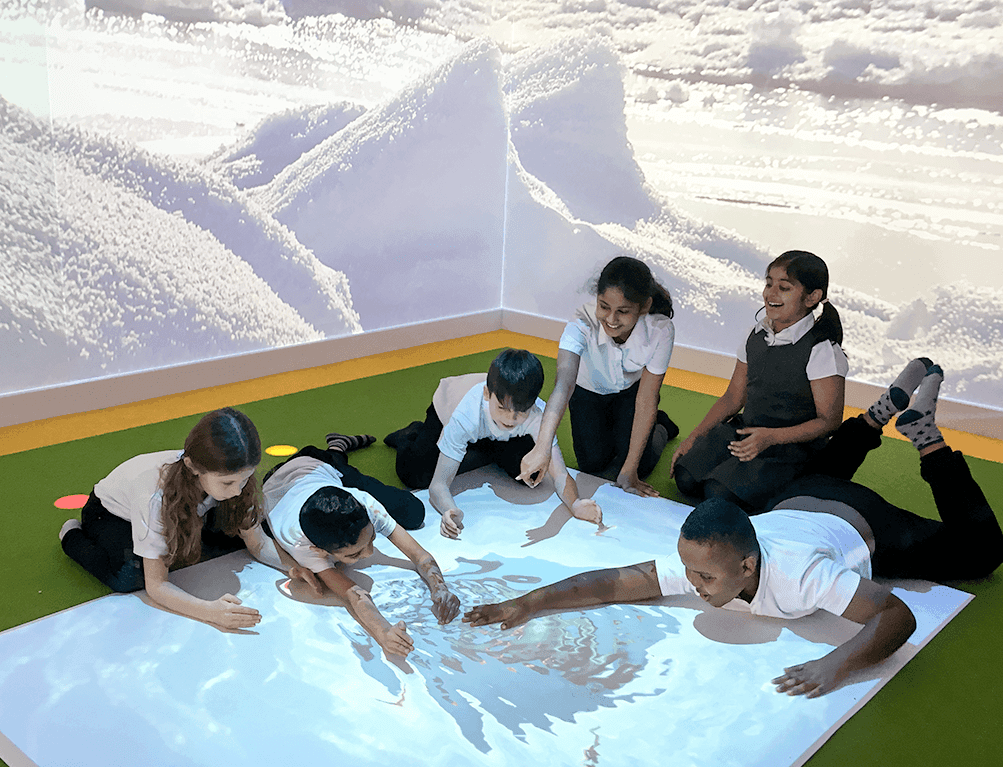
Magic table projectors are better suited to those with diminished cognitive ability especially those in the more advanced stages of dementia or profound learning disabilities.
What is a multitouch table
A multipoint touch screen is effectively a scaled up mobile tablet either running Android or Windows, which recognises more than one point of contact with the surface simultaneously, with as many as 32 independent touches possible, but more typically around 8 or 10. Larger static Multi touch screens and tables are ideal for museums and exhibition or entertainment and leisure environments.
What is a Sensory Projector
Sensory Projectors work by showing an image on a surface whether it be a tabletop, floor or wall, and reacting to movements or gestures from the user, typically using a suite of activities and games specifically designed for the users, either elder care, learning difficulties adults or as part of a sensory environment for autism and learning disabilities.
Key differences between the different systems
- Cognitive ability: Touch screen tables are designed for the more cognitively and physically able, with the ability to understand and operate the system, whereas the magic table projectors are better suited to those with diminished cognitive ability especially those in the more advanced stages of dementia or profound learning disabilities. The touch screen system is typically more menu driven and requires a greater degree of understanding to participate.
- Portability: Touch Screen Tables are typically mobile in that they can be wheeled around a room, but can be awkward to move around a building or between floors. Interactive projectors may be static ceiling or wall mounted units, or fully portable such as the omiVista Mobii allowing ease of movement between rooms and floors of a care home or special needs school.
- Interactivity: Multitouch surfaces respond to up to 32 touch points simultaneously, but the system can struggle to operate with unintended input such as someone leaning on the surface. Interactive Projectors offer a big output from a small input, which is more engaging and less intimidating for those of varied ability levels, small gestures can result in large responses in the activity or games, and there is often no right or wrong just participation. The degree of interactivity on a multitouch screen is determined by the software used, and the touch points specified by the particular activity which can be as low as 1 or 2.
- Number of Users: Both systems can be used by multiple users simultaneously, with the multi touch screen responding to up to 32 points of contact, this suits the more cognitively able, whereas the interactive projector, is limited only by the number of people around the projection surface whether it be a floor or a table, it will respond to any and all gestures or motions on that surface. When used on a tabletop a sensory projector can comfortably accommodate 5 to 6 participants, whereas the multitouch screen will rarely be used by more than 2 people simultaneously due to the greater complexity.
- Adaptive Difficulty: It is often important to be able to quickly change the difficulty of activities and games quickly to adapt to the varying physical and cognitive capabilities of different users, Interactive Projectors such as the omiVista Mobii or install, have dedicated remote controls allowing for immediate changes to difficulty and speed allowing for greater inclusion. Most multi touch table systems involve navigating a menu based system and changing setting through the menus.
- Physical Involvement: Both types of system can be used to run games and activities on a tabletop environment, the interactive sensory projector can be used to project onto a large floor area though, which encourages floor activities which may involve lower limbs and a greater degree of physical engagement. Touch screens can get hot while being used and with the reflective glare from the toughed glass this can be stressful for some.
Interactive Sensory Projectors offer a big output from a small input, which is more engaging and less intimidating for those of varied ability levels
Multitouch tables or screens offer advantages in menu driven environments for the more cognitively able such as museums, whereas interactive sensory projectors are better suited to community care environments with a greater mixture of cognitive ability, and are more inclusive of those with varied ability levels, and offer a greater degree of physical stimulation, ideal for people with learning difficulties or disabilities. Interactive Sensory Projectors are also popular choices in Sensory Rooms either at special needs schools, hospitals or day centres.

